Abstract
1 The sympathetic nervous system plays an important role in the regulation of blood pressure. Plasma catecholamine concentrations are considered to be reliable indices of sympatho-neuronal (noradrenaline) and sympatho-adrenal (adrenaline) activity and reactivity in man.
2 Sympathetic and adrenal activity and reactivity in young patients with essential hypertension or hyperkinetic heart syndrome were compared with an appropriate control group matched for age. The groups of hypertensive patients and patients with hyperkinetic heart syndrome could be clearly distinguished from control subjects on the basis of circulating catecholamine levels at rest.
3 A clear-cut increase in circulating noradrenaline and adrenaline was observed in young patients with essential hypertension and hyperkinetic heart syndrome at rest. Clinically, hypertensive patients were characterized by elevated systolic and diastolic blood pressure and increased heart rate, whereas patients with hyperkinetic heart syndrome had increased heart rate and increased systolic blood pressure, whereas diastolic blood pressure was normal. At rest, there was a significant positive correlation between heart rate and circulating catecholamines in both groups of patients. In hypertensives a positive correlation between heart rate and plasma adrenaline concentrations, in patients with hyperkinetic heart syndrome a positive correlation between heart rate and plasma noradrenaline concentrations could be observed. In addition a positive correlation between plasma noradrenaline concentrations and systolic blood pressure in all groups of patients studied, was obtained.
4 Sympatho-neuronal and sympatho-adrenal reactivity during mental stress or physical exercise increased in both groups of patients, mirrored by an increase in blood pressure and heart rate.
5 Pindolol, a potent non-selective β-adrenoceptor blocking drug with intrinsic sympathomimetic activity and minimal membrane stabilizing properties, administered in a single oral dose of 10 mg, diminished the exaggerated sympathetic tone in both groups of patients by attenuating circulating catecholamine levels at rest or during mental stress, but not during physical exercise.
Full text
PDF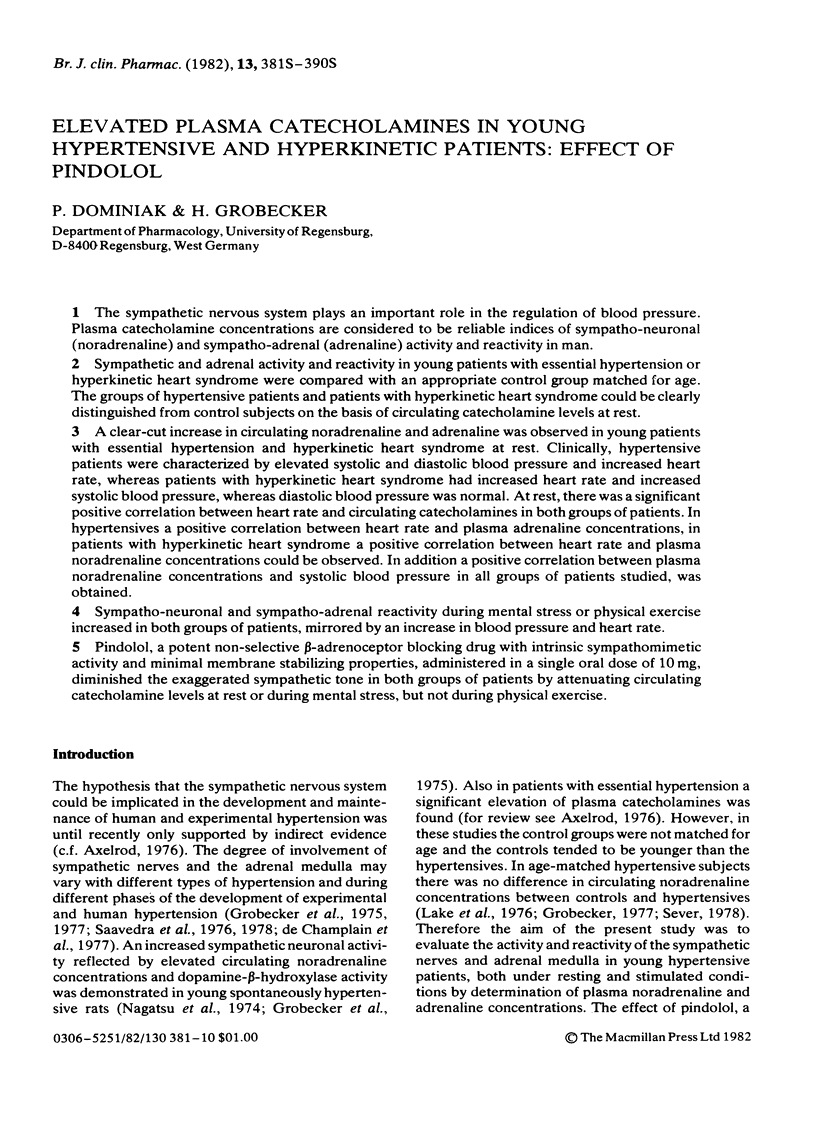
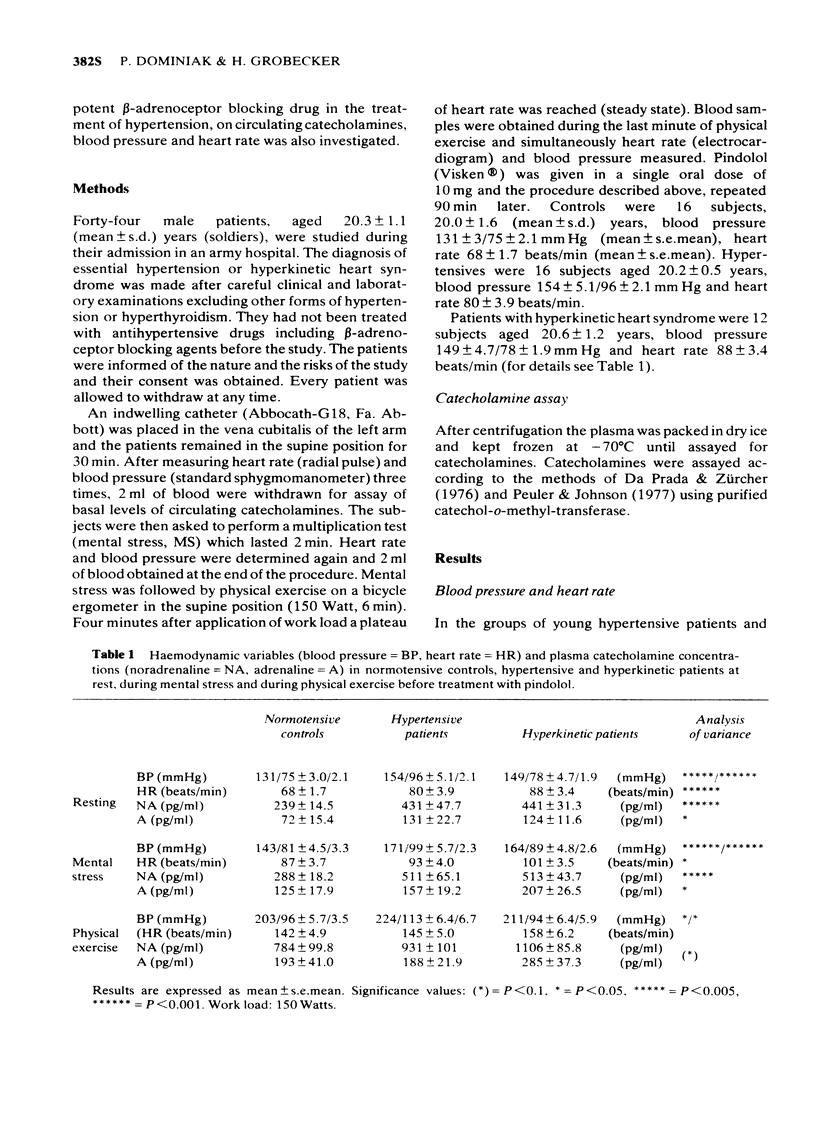
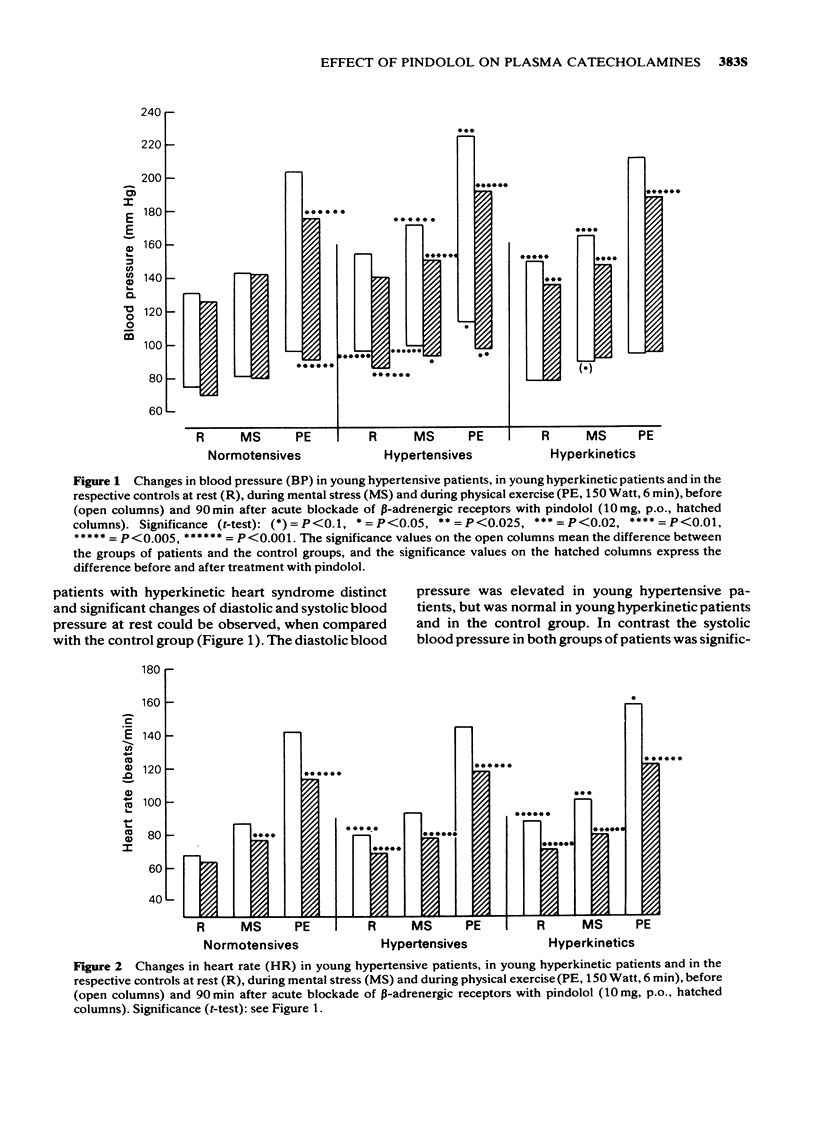
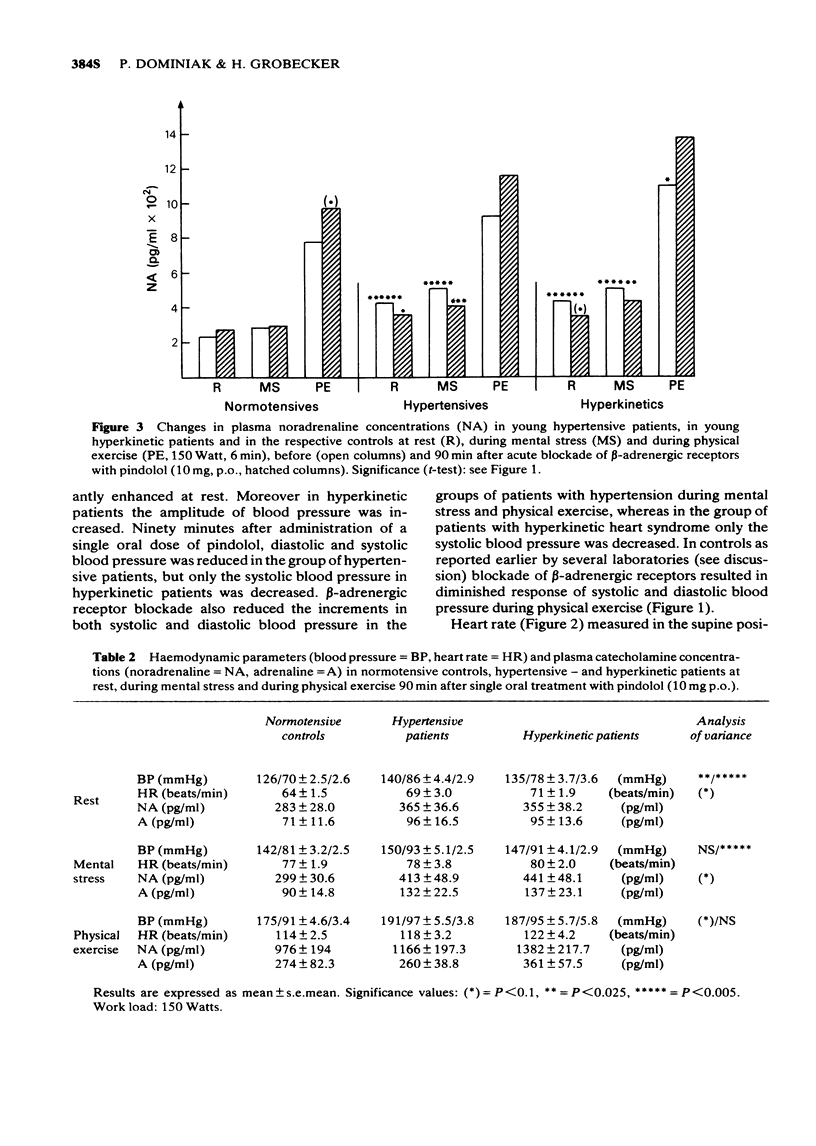
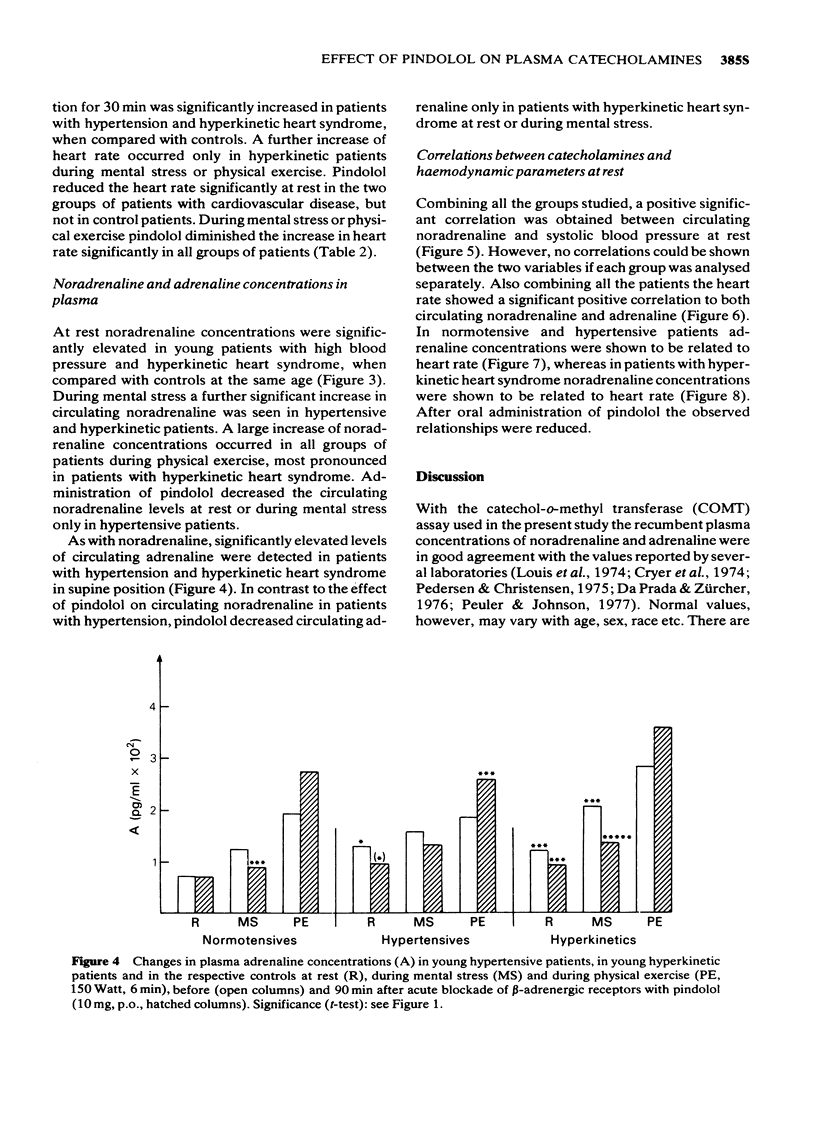
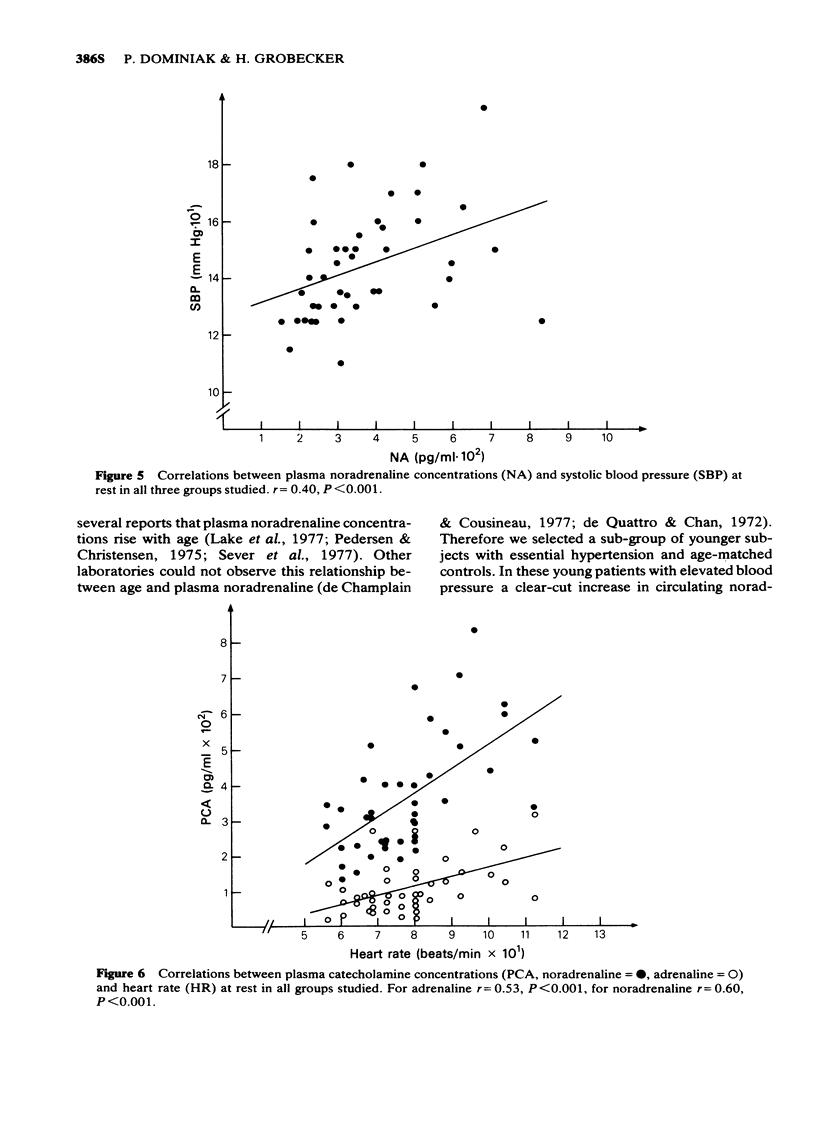
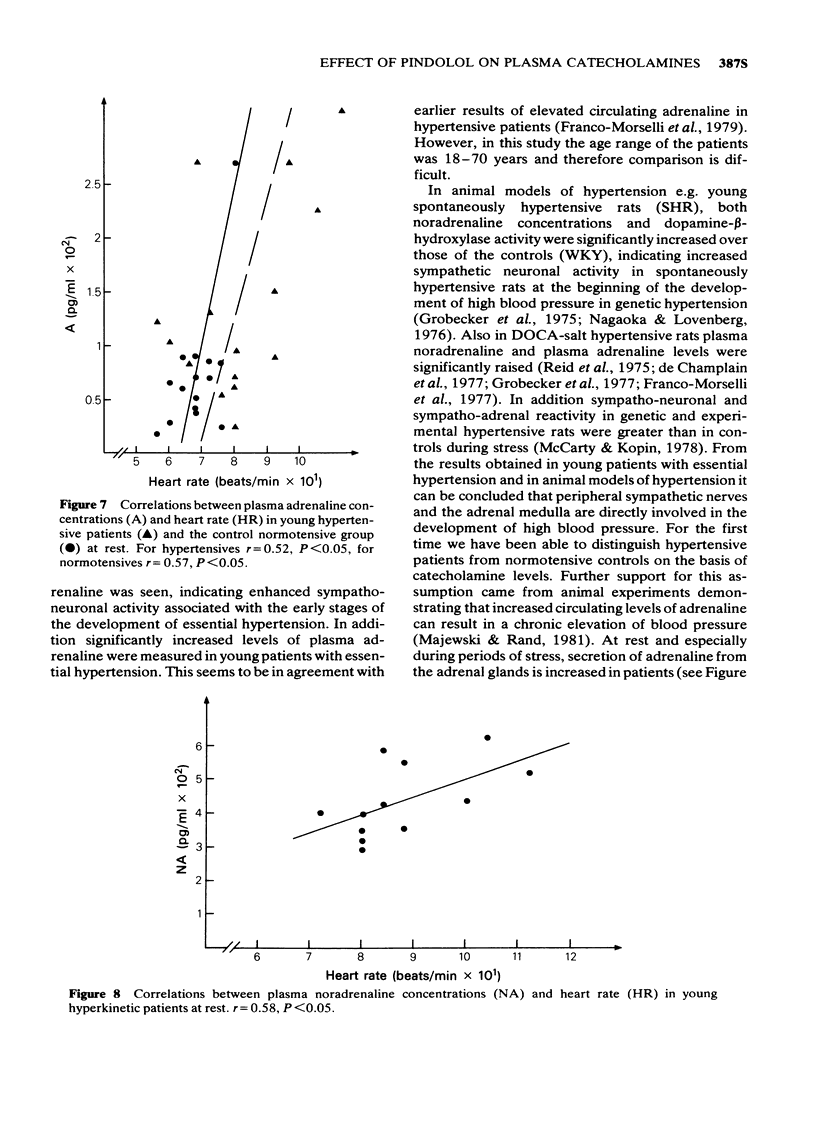
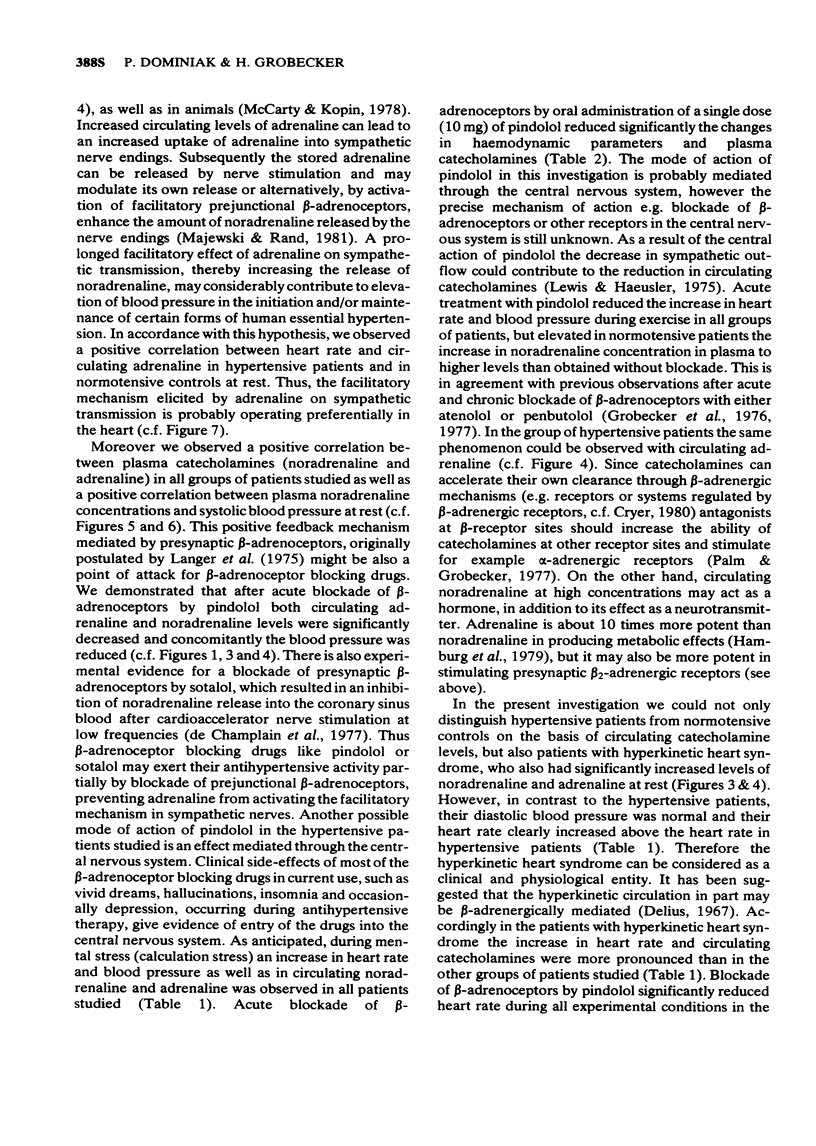
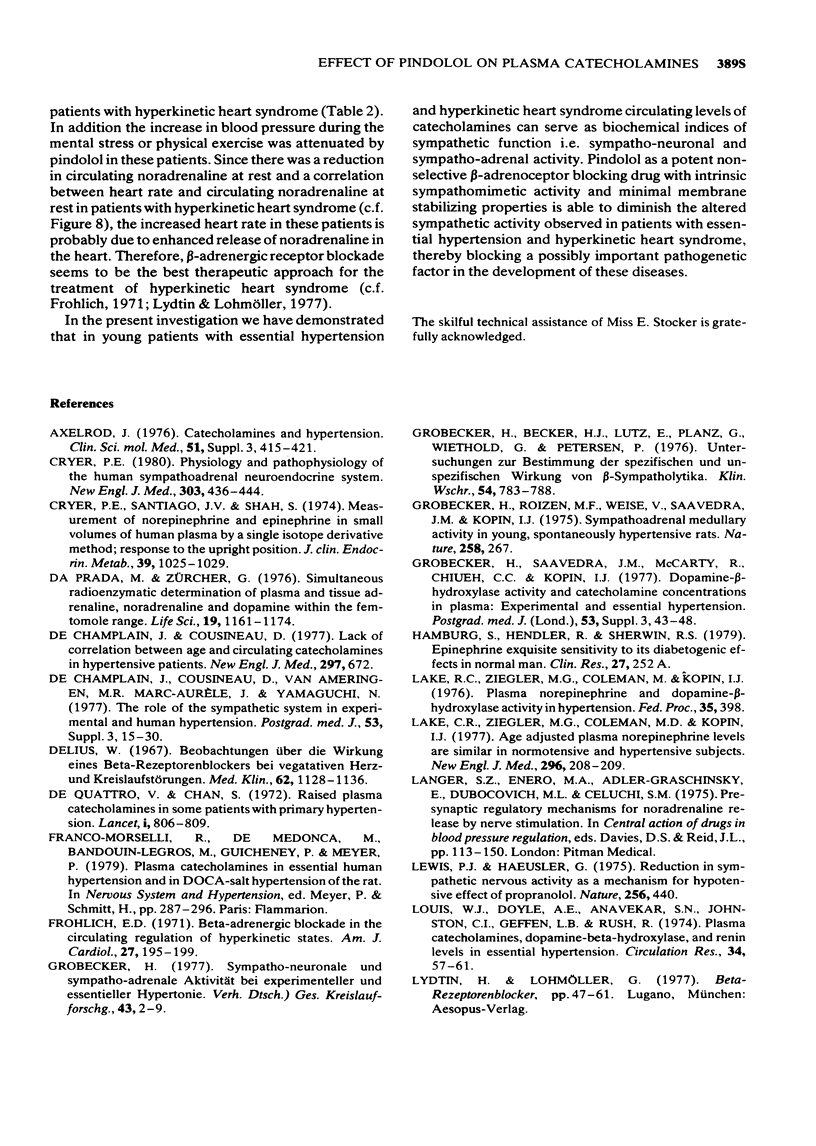
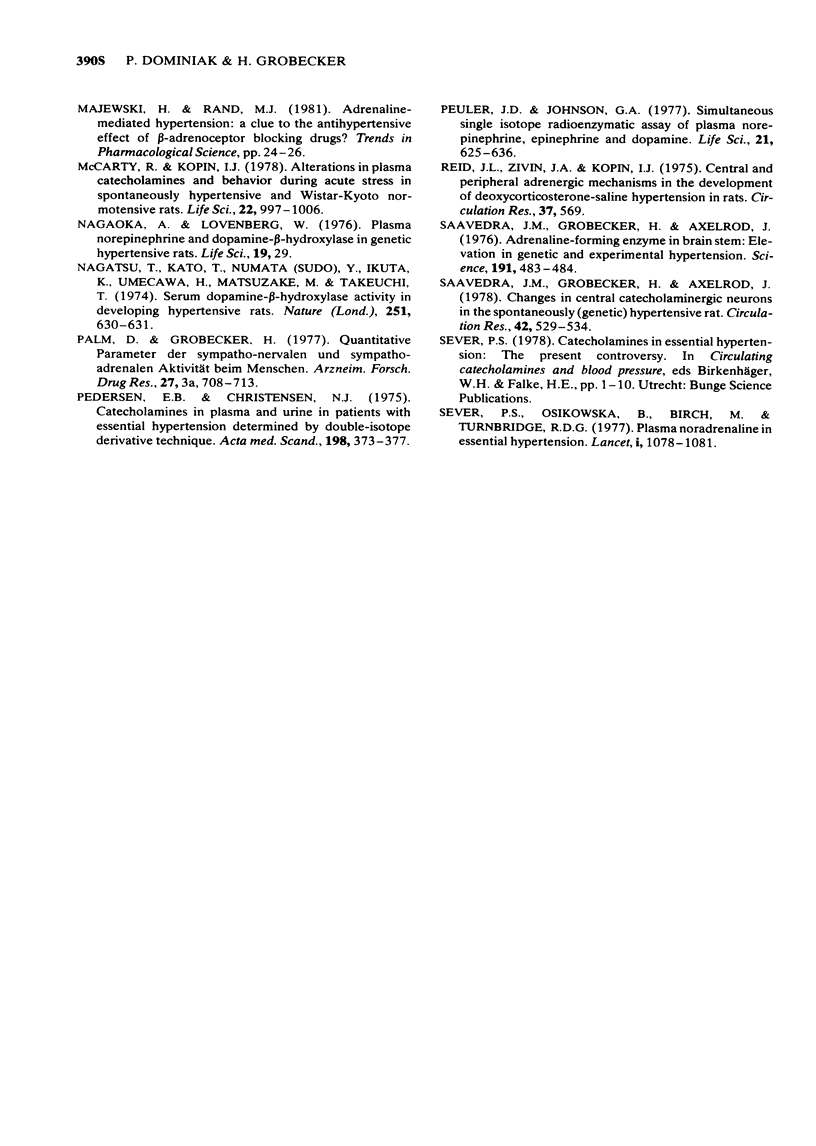
Selected References
These references are in PubMed. This may not be the complete list of references from this article.
- Cryer P. E. Physiology and pathophysiology of the human sympathoadrenal neuroendocrine system. N Engl J Med. 1980 Aug 21;303(8):436–444. doi: 10.1056/NEJM198008213030806. [DOI] [PubMed] [Google Scholar]
- Cryer P. E., Santiago J. V., Shah S. Measurement of norepinephrine and epinephrine in small volumes of human plasma by a single isotope derivative method: response to the upright posture. J Clin Endocrinol Metab. 1974 Dec;39(6):1025–1029. doi: 10.1210/jcem-39-6-1025. [DOI] [PubMed] [Google Scholar]
- Da Prada M., Zürcher Simultaneous radioenzymatic determination of plasma and tissue adrenaline, noradrenaline and dopamine within the femtomole range. Life Sci. 1976 Oct 15;19(8):1161–1174. doi: 10.1016/0024-3205(76)90251-4. [DOI] [PubMed] [Google Scholar]
- De Champlain J., Cousineau D. Lack of correlation between age and circulating catecholamines in hypertensive patients. N Engl J Med. 1977 Sep 22;297(12):672–672. doi: 10.1056/NEJM197709222971223. [DOI] [PubMed] [Google Scholar]
- De Champlain J., Cousineau D., Van Amerigen M. R., Marc-Aurèle J., Yamaguchi N. The role of the sympathetic system in experimental and human hypertension. Postgrad Med J. 1977;53 (Suppl 3):15–30. [PubMed] [Google Scholar]
- DeQuattro V., Chan S. Raised plasma-catecholamines in some patients with primary hypertension. Lancet. 1972 Apr 15;1(7755):806–809. doi: 10.1016/s0140-6736(72)90796-9. [DOI] [PubMed] [Google Scholar]
- Delius W. Beobachtungen über die Wirkung eines Beta-Rezeptoren-Blockers bei begetativen Herz-und Kreislaufstörungen. Med Klin. 1967 Jul 21;62(29):1128–1136. [PubMed] [Google Scholar]
- Frohlich E. D. Beta adrenergic blockade in the circulatory regulation of hyperkinetic states. Am J Cardiol. 1971 Feb;27(2):195–199. doi: 10.1016/0002-9149(71)90258-x. [DOI] [PubMed] [Google Scholar]
- Grobecker G., Roizen M. F., Weise V., Saavedra J. M., Kopin I. J. Letter: Sympathoadrenal medullary activity in young, spontaneously hypertensive rats. Nature. 1975 Nov 20;258(5532):267–268. doi: 10.1038/258267a0. [DOI] [PubMed] [Google Scholar]
- Grobecker H., Planz G., Wiethold G., Simrock R., Becker H. J., Lutz E., Petersen P. Spezifische und unspezifische Wirkungen von beta-Sympatholytika am Menschen. Klin Wochenschr. 1976 Aug 15;54(16):783–788. doi: 10.1007/BF01614295. [DOI] [PubMed] [Google Scholar]
- Grobecker H., Saavedra J. M., McCarty R., Chiueh C. C., Kopin I. J. Dopamine-beta-hydroxylase activity and catecholamine concentrations in plasma: experimental and essential hypertension. Postgrad Med J. 1977;53 (Suppl 3):43–48. [PubMed] [Google Scholar]
- Grobecker H. Sympatho-neuronale und sympatho-adrenale Aktivität bei experimenteller und essentieller Hypertonie. Verh Dtsch Ges Kreislaufforsch. 1977;43:2–9. [PubMed] [Google Scholar]
- Lake C. R., Ziegler M. G., Coleman M. D., Kopin I. J. Age-adjusted plasma norepinephrine levels are similar in normotensive and hypertensive subjects. N Engl J Med. 1977 Jan 27;296(4):208–209. doi: 10.1056/NEJM197701272960408. [DOI] [PubMed] [Google Scholar]
- Lewis P. J., Haeusler G. Reduction in sympathetic nervous activity as a mechanism for hypotensive effect of propranolol. Nature. 1975 Jul 31;256(5516):440–440. doi: 10.1038/256440a0. [DOI] [PubMed] [Google Scholar]
- McCarty R., Kopin I. J. Alterations in plasma catecholamines and behavior during acute stress in spontaneously hypertensive and Wistar-Kyoto normotensive rats. Life Sci. 1978 Mar;22(11):997–1005. doi: 10.1016/0024-3205(78)90365-x. [DOI] [PubMed] [Google Scholar]
- Nagaoka A., Lovenberg W. Plasma norepinephrine and dopamine-beta-hydroxylase in genetic hypertensive rats. Life Sci. 1976 Jul 1;19(1):29–34. doi: 10.1016/0024-3205(76)90370-2. [DOI] [PubMed] [Google Scholar]
- Palm D., Grobecker H. Quantitative parameter der sympatho-nervalen und sympatho-adrenalen Aktivität beim Menschen. Einfluss von beta-Rezeptorenblockern. Arzneimittelforschung. 1977;27(3A):708–713. [PubMed] [Google Scholar]
- Pedersen E. B., Christensen N. J. Catecholamines in plasma and urine in patients with essential hypertension determined by double-isotope derivative techniques. Acta Med Scand. 1975 Nov;198(5):373–377. doi: 10.1111/j.0954-6820.1975.tb19559.x. [DOI] [PubMed] [Google Scholar]
- Peuler J. D., Johnson G. A. Simultaneous single isotope radioenzymatic assay of plasma norepinephrine, epinephrine and dopamine. Life Sci. 1977 Sep 1;21(5):625–636. doi: 10.1016/0024-3205(77)90070-4. [DOI] [PubMed] [Google Scholar]
- Reid J. L., Zivin J. A., Kopin I. J. Central and peripheral adrenergic mechanisms in the development of deoxycorticosterone-saline hypertension in rats. Circ Res. 1975 Nov;37(5):569–579. doi: 10.1161/01.res.37.5.569. [DOI] [PubMed] [Google Scholar]
- Saavedra J. M., Grobecker H., Axelrod J. Adrenaline-forming enzyme in brainstem: elevation in genetic and experimental hypertension. Science. 1976 Feb 6;191(4226):483–484. doi: 10.1126/science.1246633. [DOI] [PubMed] [Google Scholar]
- Saavedra J. M., Grobecker H., Axelrod J. Changes in central catecholaminergic neurons in the spontaneously (genetic) hypertensive rat. Circ Res. 1978 Apr;42(4):529–534. doi: 10.1161/01.res.42.4.529. [DOI] [PubMed] [Google Scholar]
- Sever P. S., Osikowska B., Birch M., Tunbridge R. D. Plasma-noradrenaline in essential hypertension. Lancet. 1977 May 21;1(8021):1078–1081. doi: 10.1016/s0140-6736(77)92335-2. [DOI] [PubMed] [Google Scholar]


